 Image Credit: DepositPhotos
Image Credit: DepositPhotos
Buying a home often comes with a significant financial commitment: the monthly mortgage payment. As a Chartered Financial Analyst with 22 years of experience investing in real estate, I’ve seen countless homeowners grapple with this financial burden.
In fact, recent data reveals that 43% of new homeowners report difficulty paying their mortgages on time. This statistic underscores the urgent need for practical strategies to manage mortgage payments more effectively.
I’ve created this guide to help homeowners like you discover unconventional yet effective ways to reduce your mortgage payments. These methods go beyond the typical advice you might hear, offering fresh perspectives and innovative approaches to lighten your financial load.
While some of these strategies may seem unusual at first glance, they’ve proven successful for many homeowners in various situations. It’s crucial to remember that every homeowner’s circumstances are unique.
What works wonders for one person might not be the best fit for another. You might find that a combination of these strategies works best for you, or that one particular method stands out as the perfect solution to your mortgage challenges.
Throughout this guide, I’ll share insights gained from my years of experience in the real estate market. My goal is to empower you with knowledge and practical tools to take control of your mortgage payments.
Let’s get started on this journey to financial relief and homeownership success!
Make a Bigger Down Payment

 Image Credit: iStock
Image Credit: iStock
Making a larger down payment when you buy a home can significantly reduce your monthly mortgage payments. This strategy works because you’re borrowing less money overall, which means lower payments throughout the life of your loan.
For example, if you’re buying a $300,000 home, putting down 20% ($60,000) instead of 10% ($30,000) could save you hundreds of dollars each month. An added bonus of a 20% down payment is that you’ll usually avoid paying for Private Mortgage Insurance (PMI).
This insurance protects the lender if you default on your loan, and not having to pay for it can lead to substantial savings. If you’re in the process of saving for a home, consider taking a bit more time to build up a larger down payment.
Earn Free Gift Cards
Swagbucks: Coupons, Paid Online Surveys & Free Gift Cards
Do you want to make money online simply by searching, shopping, surveys, or playing games?
Pros:
- Account creation is free
- Big bonus on sign up
- Many ways to earn free money
- Mobile-friendly rewards site and apps
- Simple to complete tasks
- $10 to sign up
Cons:
- Not exactly passive income
- Redeeming SB points sometimes takes awhile
- It isn’t easy to qualify for all surveys
- Customer service isn’t the greatest (or fastest)


Personally, I prefer not to make down payments, but my goal was never to minimize my mortgage payments.
How To Buy a House with Little or No Money Down (I Have Done It)


Downsize Your Home
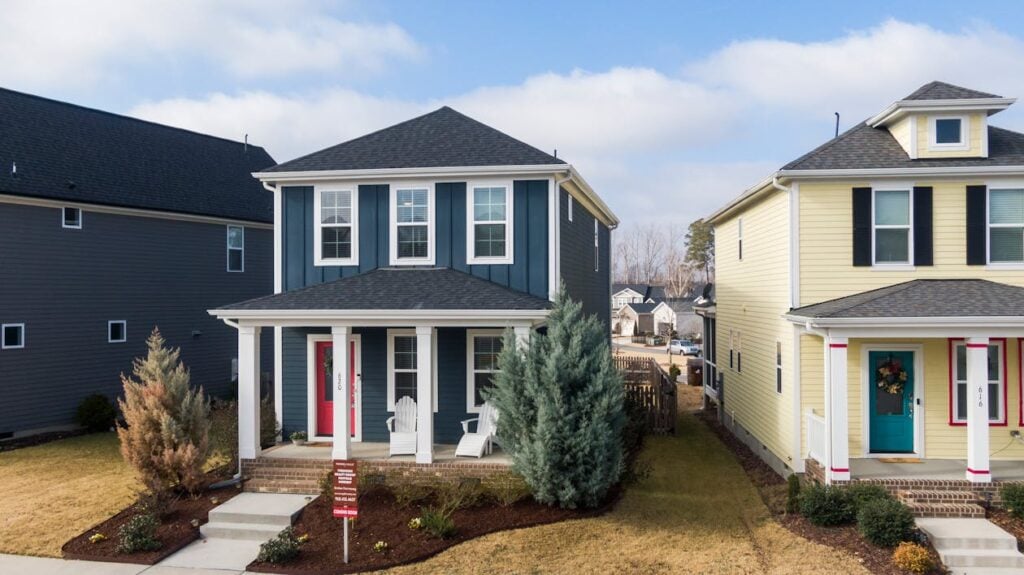
 Image Credit: Pexels
Image Credit: Pexels
Moving to a smaller, more affordable home can dramatically reduce your mortgage payment. This strategy involves selling your current home and purchasing a less expensive property. The result is a smaller mortgage, which naturally leads to lower monthly payments.
For instance, if you downsize from a $400,000 home to a $300,000 home, you could potentially cut your mortgage payment by 25% or more. Beyond the mortgage savings, a smaller home often comes with lower property taxes, reduced utility costs, and less maintenance expense.
While the idea of moving can feel daunting, the long-term financial benefits can be substantial. Many homeowners who downsize find they not only save money but also enjoy a simpler lifestyle with less upkeep and more financial freedom.
I believe this is the smartest decision on this list. You should only buy a house you can afford.
How Much House Can You Afford?: The McDonald’s Principle


Refinance Your Mortgage
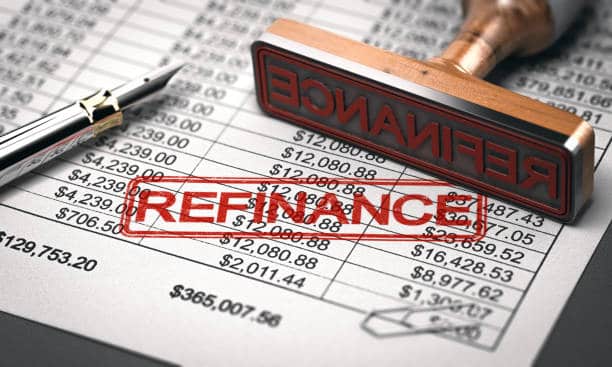
 Image Credit: iStock
Image Credit: iStock
Refinancing your mortgage means replacing your current loan with a new one that has better mortgage terms. This can be an effective way to lower your monthly payments, especially if interest rates have dropped since you first got your mortgage.
For example, if you originally had a 30-year fixed-rate mortgage at 5% interest, and rates have fallen to 3.5%, refinancing could save you hundreds of dollars each month. Another scenario where refinancing helps is if your credit score has improved significantly since you first got your mortgage.
A good credit score often qualifies you for lower interest rates. Keep in mind that refinancing usually involves closing costs, so you’ll need to calculate if the long-term savings outweigh these upfront expenses.
Many homeowners find that the monthly savings make refinancing well worth it, especially if they plan to stay in their home for several more years.
Bad Credit, Big Problems: 13 Ways Your Score Might Be Holding You Back (with Video)


Apply for Loan Modification Programs
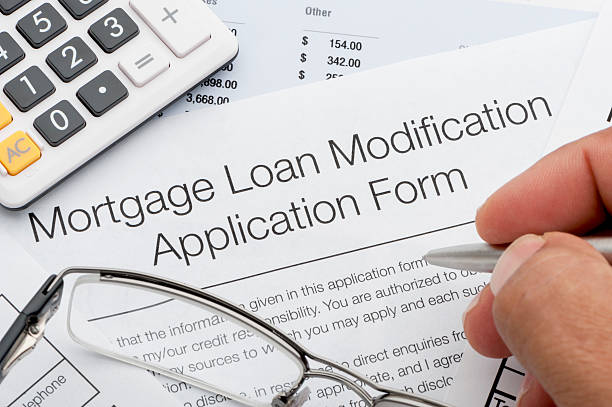
 Image Credit: iStock
Image Credit: iStock
Loan modification programs can offer relief if you’re struggling to make your mortgage payments. These programs work with your current lender to change the terms of your existing loan, making it more manageable for your financial situation.
While the specific Home Affordable Modification Program (HAMP) has ended, many lenders still offer their own modification options. These might include lowering your interest rate, extending your loan term, or in some cases, even reducing the principal amount you owe.
For instance, extending your loan term from 15 years to 30 years could significantly reduce your monthly payment, even if the interest rate stays the same. To start this process, reach out to your lender and ask about their loan modification options.
Be prepared to provide documentation of your financial hardship and current income. Remember, lenders often prefer to modify loans rather than risk foreclosure, so don’t hesitate to ask for help.
How To Become a Landlord: Tips From An Experienced Landlord
Utilize Government Assistance Programs

 Image Credit: iStock
Image Credit: iStock
The government offers various programs designed to help homeowners manage their mortgages more easily. These programs often have more flexible requirements than traditional loans and can lead to significant savings.
For example, if you have an FHA loan, you might qualify for FHA Streamline Refinancing. This option allows you to refinance your mortgage with less paperwork and potentially without an appraisal, saving you time and money.
Veterans with VA loans can look into the VA Interest Rate Reduction Refinance Loan (IRRRL), which can lower interest rates with minimal hassle. Many states also offer their own mortgage assistance programs, which might include low-interest loans for home repairs or help with down payments for first-time buyers.
To find out what’s available in your area, check with your state’s housing finance agency or visit the U.S. Department of Housing and Urban Development (HUD) website for a list of local resources.
The Best Mortgage Housing Hack, Despite Rates Rising
Rent Out Part of Your Home


Turning a portion of your home into a rental space can be an excellent way to offset your mortgage payments. You could rent out a spare bedroom, convert your basement into an apartment, or even offer your garage as storage space.
This strategy essentially lets other people pay off the mortgage for you, easing your financial burden. For example, if your mortgage is $1,500 per month and you can rent out a room for $500, you’ve just cut your personal housing expense by a third.
This strategy not only helps with your mortgage but can also provide some tax benefits, as you may be able to deduct certain expenses related to the rental portion of your home. Before you start, make sure to check local zoning laws and regulations about renting out part of your property.
Also, consider the impact on your daily life, sharing your space with a tenant is a big decision that requires careful thought.
Passive Real Estate Investing – How To Get Started
Switch to Biweekly Payments


Changing your payment schedule to biweekly can make a big difference in your mortgage over time. Instead of making 12 monthly payments each year, you’ll make 26 half-payments.
This small change results in one extra full payment annually, which goes directly towards your principal. Over the life of your loan, this strategy can help you pay off your mortgage faster and save thousands in interest.
For example, on a $200,000 30-year mortgage at 4% interest, biweekly payments could help you pay off your loan about 4 years early and save over $22,000 in interest. Many lenders offer this option, but if yours doesn’t, you can achieve the same effect by setting aside half your mortgage payment every two weeks.
Just make sure you’re not charged extra fees for this payment method.
26 Costly Mistakes First-Time Homebuyers Regret (And How to Avoid Them)
Negotiate with Your Lender

 Image Credit: Pexels
Image Credit: Pexels
Talking directly with your lender can open up possibilities for lowering your mortgage payment. Lenders often prefer to work out a solution rather than risk foreclosure. If you’re facing financial hardship, explain your situation to your lender and ask about options for payment relief.
They might offer temporary forbearance, allowing you to pause or reduce payments for a short time. Some lenders may agree to a loan modification, adjusting your interest rate or loan term to make payments more manageable.
For instance, they might extend your loan term back to 30 years, spreading out the remaining balance over a longer period and lowering your monthly payment. Remember, lenders want to keep good customers, so don’t be afraid to ask for help when you need it.
🙋♀️If you like what you are reading, then click like and subscribe to my newsletter. We share tips to waste less time and money.
Use Mortgage Points

 Image Credit: iStock
Image Credit: iStock
Mortgage points, also known as discount points, are fees you can pay upfront to lower your interest rate. Each point costs 1% of your loan amount and typically lowers your rate by 0.25%.
For example, on a $200,000 loan, one point would cost $2,000 and might reduce your rate from 4% to 3.75%. This reduction can lead to significant savings over the life of your loan.
Buying points makes the most sense if you plan to stay in your home for a long time, allowing you to recoup the upfront cost through lower monthly payments. To decide if points are right for you, calculate how long it will take for the monthly savings to equal the cost of the points.
If you’ll stay in the home longer than this break-even point, buying points could be a smart move.
I am a big fan of mortgage points. I pay them instead of down payments. The PMI goes away quickly, but you are still locked into a lower interest rate. It’s brilliant.
Why Buying a House is Financially Better Than Renting (Includes Calculator)
Extend Your Loan Term


I am personally against this one, but in the spirit of this article, you can lower your mortgage payments by making your mortgage longer.
Lengthening your mortgage term can substantially lower your monthly payments. If you currently have a 15-year or 20-year mortgage, extending to a 30-year term will spread your remaining balance over a longer period, resulting in smaller monthly payments.
For instance, if you have $200,000 left on a 15-year mortgage at 3.5% interest, your monthly payment would be about $1,430. Extending this to a 30-year term at the same rate would lower your payment to around $900.
Keep in mind that while this strategy reduces your monthly obligation, it also means you’ll pay more in interest over the life of the loan. Still, if your primary goal is to improve your monthly cash flow, extending your loan term can provide significant relief.
Common Types Of Loans Explained Simply
Consider an Adjustable Rate Mortgage (ARM)
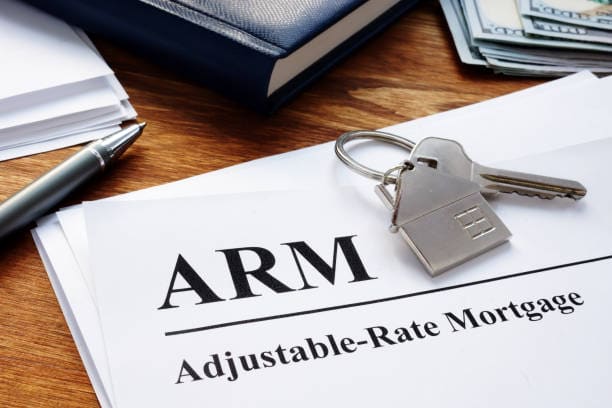

An Adjustable Rate Mortgage (ARM) starts with a lower interest rate than fixed-rate mortgages, which means lower initial monthly payments. The rate remains stable for a set period, often 5, 7, or 10 years – before adjusting periodically based on market rates.
For instance, a 5/1 ARM might start at 3% for five years, while a 30-year fixed-rate mortgage might be at 4%. On a $200,000 loan, this difference could save you about $115 per month for those first five years.
ARMs can be a good option if you plan to move or refinance before the adjustable period begins. They’re also worth considering if you expect your income to increase substantially in the future, allowing you to handle potential rate increases.
12 Things That Increase Your Property Value (And 12 That Lower It)
Consider an Interest-Only Loan

 Image Credit: iStock
Image Credit: iStock
An interest-only mortgage allows you to pay just the interest on your loan for a set period, usually 5 to 10 years. This approach can dramatically lower your monthly payments in the short term.
For example, on a $300,000 30-year mortgage at 4% interest, a traditional payment would be about $1,432 per month. With an interest-only option, you might pay only $1,000 per month during the interest-only period.
This type of loan can be helpful if you expect your income to increase significantly in the future or if you plan to sell your home before the interest-only period ends. Remember, your payments will increase substantially after the interest-only period, and you won’t build equity during this time.
Carefully consider your long-term financial plans before choosing this option. I’ve done an interest only mortgage once. It’s risky. You need to be in a position to pay it back, and you need to do the math on what your payments will look like in the worst-case scenario.
What Taxes Do You Need To Pay On Your Real Estate Investment?
Shop Around for Better Rates

 Image Credit: Pexels
Image Credit: Pexels
Taking the time to compare offers from multiple lenders can lead to significant savings on your mortgage. Even a small difference in interest rate can save you thousands over the life of your loan.
Start collecting quotes from banks, credit unions, and online lenders. Don’t just look at the interest rate, pay attention to the Annual Percentage Rate (APR), which includes fees and gives you a more accurate picture of the loan’s cost.
For example, if you’re borrowing $250,000, a difference of just 0.5% in your interest rate could save you over $70 per month and more than $25,000 over a 30-year loan term.
Also, consider working with a mortgage broker who can access multiple lenders and might find deals you wouldn’t on your own.
Think Outside the Agent: Clever Things To Ask For When Buying a House
Try a Mortgage Recast


A mortgage recast can lower your monthly payments if you have a large sum of money available. With this strategy, you make a substantial lump-sum payment towards your principal, and your lender then recalculates your payments based on the new, lower balance.
Your interest rate and loan term stay the same, but your monthly payments decrease. For example, if you have a $300,000 30-year mortgage at 4% interest and make a $50,000 lump-sum payment, your monthly payment could drop $240.
This option works well if you receive an inheritance, bonus, or other windfall. Not all lenders offer recasting, and there’s usually a fee involved, but it’s often much lower than refinancing costs.
Must-Know Investment Property Upgrades, From A Landlord
Explore Shared Appreciation Mortgages

 Image Credit: iStock
Image Credit: iStock
A shared appreciation mortgage (SAM) offers lower monthly payments in exchange for a share of your home’s future appreciation. Under this arrangement, your lender agrees to reduce your interest rate or monthly payments.
In return, when you sell your home or after a set period, you pay the lender a percentage of the increase in your home’s value. For instance, you might get a 2% reduction in your interest rate in exchange for 25% of your home’s appreciation.
This can significantly lower your monthly payments now, but it means you’ll give up some potential profits in the future. SAMs are less common and more complex than traditional mortgages, so make sure you understand all the terms before agreeing to one.
🙋♀️If you like what you are reading, then click like and subscribe to my newsletter. We share tips to waste less time and money.
Use a Home Equity Line of Credit (HELOC)

 Image Credit: iStock
Image Credit: iStock
A Home Equity Line of Credit (HELOC) can be a useful tool for managing your mortgage payments. A HELOC allows you to borrow against the equity in your home, often at a lower interest rate than other types of loans.
You could use a HELOC to consolidate high-interest debt, freeing up more money for your mortgage payment. Alternatively, you might use it to make home improvements that increase your home’s value, potentially allowing you to refinance your primary mortgage at better terms.
For example, if you have $20,000 in credit card debt at 18% interest, paying it off with a HELOC at 5% interest could save you hundreds each month. Just be cautious not to overextend yourself with additional debt, and remember that your home secures a HELOC.
I’ve done used HELOCs plenty of times in my life, but it was always to lower interest rates or as down payments.
Understanding Rental Property Depreciation Recapture: I’ve Paid It A Few Times
Look into Assumable Mortgages
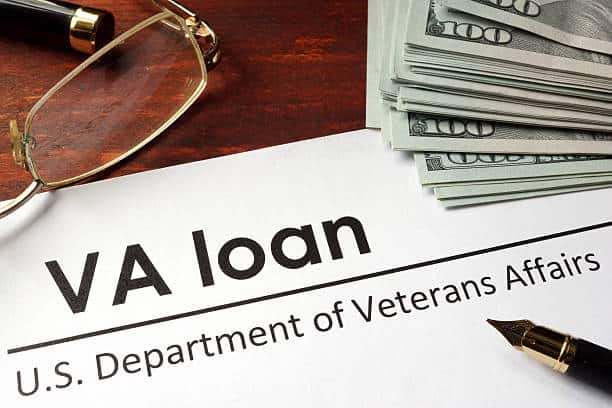
 Image Credit: iStock
Image Credit: iStock
An assumable mortgage allows a buyer to take over your existing mortgage terms when you sell your home. This feature can be particularly valuable when interest rates are rising.
For example, if you have a mortgage at 3.5% interest and current market rates are 5%, a buyer might find your assumable mortgage very attractive. This can make your home easier to sell, potentially at a higher price.
FHA and VA loans are often assumable, while conventional loans typically are not. If you’re buying a home, looking for one with an assumable mortgage could save you money on interest if rates have increased since the original mortgage was issued.
Keep in mind that the buyer usually needs to qualify for the loan and may need to pay the difference between the outstanding mortgage balance and the home’s purchase price.
When Is The Best Time To Buy A House? A Real Estate Pro Answers.


Explore Balloon Payment Mortgages


A balloon mortgage offers lower monthly payments for a set period, usually 5 to 7 years, but requires a large lump sum payment at the end of that term.
For example, you might pay as if you had a 30-year mortgage, but after 7 years, you’d need to pay off the remaining balance in full. This structure can significantly reduce your monthly payments in the short term.
On a $200,000 loan at 4% interest, your payments might be about $955 per month, compared to $1,432 on a traditional 30-year fixed-rate mortgage. This type of mortgage can work well if you expect to sell your home or refinance before the balloon payment comes due.
It’s also an option if you anticipate a large influx of cash in the future. Be cautious with this strategy, as failing to make the balloon payment could result in foreclosure.
25 Things Homebuyers Instantly Hate About Your House
Check Out Local Housing Assistance

 Image Credit: iStock
Image Credit: iStock
Many cities and states offer programs to help homeowners manage their mortgage payments. These might include grants or low-interest loans for home repairs or energy-efficient upgrades, which can lower your overall housing costs.
Some areas offer property tax reductions for certain homeowners, such as seniors or veterans, effectively lowering your total monthly housing payment. There might also be programs specifically for first-time homebuyers or low-income families that offer down payment assistance or favorable loan terms.
For example, some cities offer forgivable loans for down payments, which turn into grants if you stay in the home for a certain number of years. Check with your local housing authority, community development office, or state housing finance agency to learn about options in your area.
23 Areas of Your House That Are Most Likely to Fail Inspection
Mastering Your Mortgage


Lowering your mortgage payment doesn’t have to remain a distant dream. The 19 strategies we’ve discussed offer real, practical ways to reduce your monthly housing costs. Start with the options that align most closely with your current situation and financial goals.
Taking action to lower your mortgage payment can lead to significant improvements in your overall financial health. You’ll free up cash for other important expenses, build your savings, and reduce financial stress. Plus, you’ll gain valuable peace of mind knowing you’re in control of your housing costs.
Don’t let a high mortgage payment hold you back any longer. Review these strategies, choose the ones that make sense for you, and take that first step towards a more manageable mortgage.
🙋♀️If you like what you just read, then subscribe to my newsletter and follow us on YouTube.👈
AI was used for light editing, formatting, and readability. But a human (me!) wrote and edited this.




